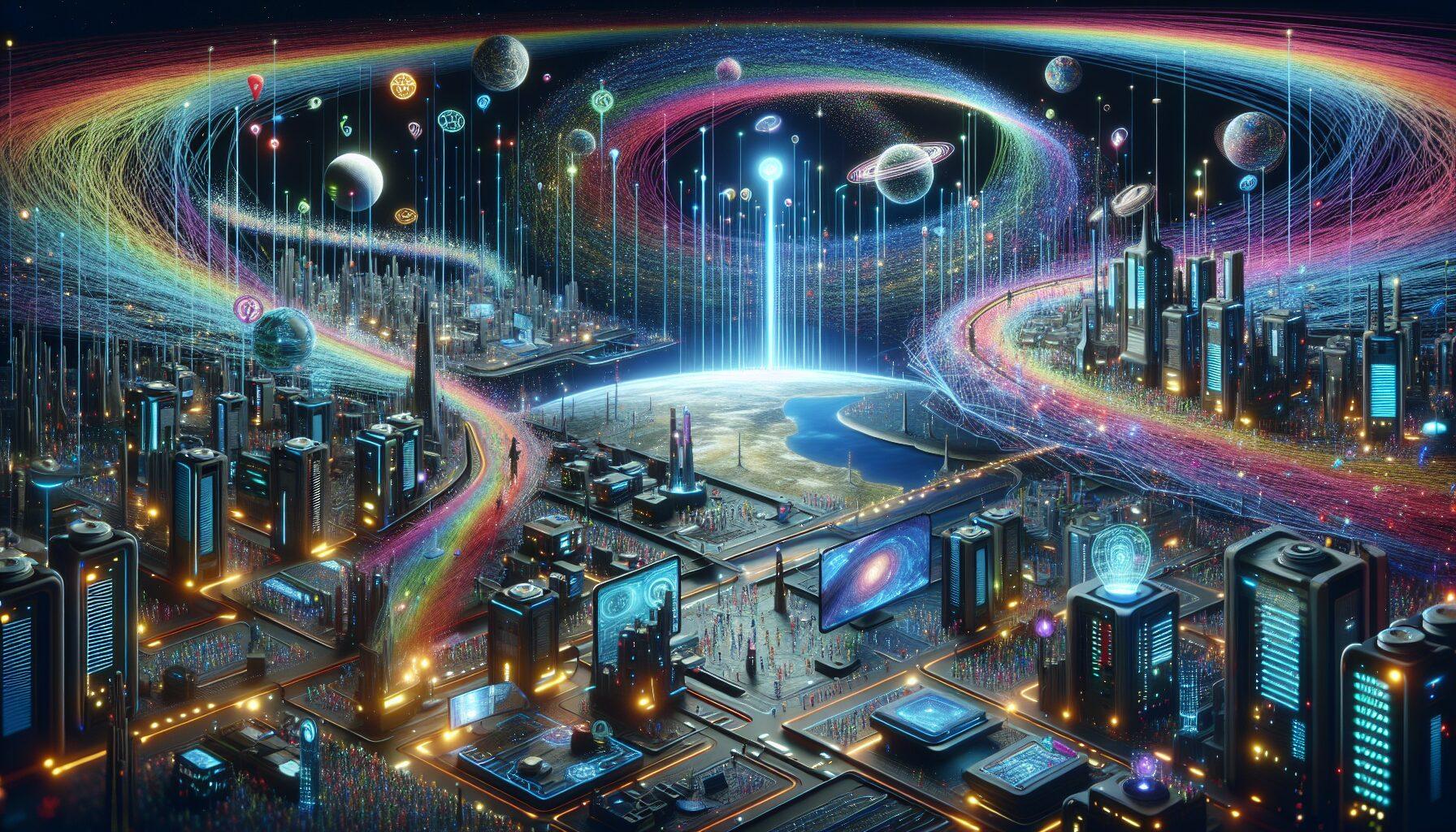Advanced Infrastructure and Technology in the Metaverse: Building the Future
Introduction
The metaverse, a convergence of virtual and augmented realities, is rapidly transforming from a conceptual vision into a palpable digital universe. At the heart of this transformation lies the intricate web of metaverse infrastructure and technology. This article delves into the advanced components driving the metaverse, offering readers a comprehensive guide to understanding its foundations, technological innovations, and future potential.
Advanced Infrastructure and Technology in the Metaverse: Building the FutureThe Core Elements of Metaverse Infrastructure
1. Blockchain Technology
Blockchain serves as the backbone of the metaverse, providing a decentralized and secure environment for transactions and data storage. It enables:
- Digital Ownership: Through non-fungible tokens (NFTs), users can own unique digital assets.
- Interoperability: Blockchain allows different virtual worlds to interact seamlessly.
- Security: Enhanced security features protect user data and digital assets from breaches.
2. Cloud Computing
Cloud computing offers the computational power required to support the expansive and resource-intensive virtual worlds within the metaverse. Key benefits include:
- Scalability: Cloud platforms can scale resources up or down based on demand.
- Accessibility: Users can access the metaverse from various devices without the need for high-end hardware.
- Cost Efficiency: Reduces the need for massive investments in physical infrastructure.
3. 5G and Beyond
High-speed internet connectivity is crucial for an immersive metaverse experience. 5G technology provides:
- Low Latency: Ensures real-time interactions and reduces lag.
- High Bandwidth: Supports seamless streaming of high-definition content.
- Enhanced Connectivity: Facilitates the integration of numerous IoT devices within the metaverse.
4. Artificial Intelligence (AI)
AI plays a pivotal role in creating intelligent and responsive virtual environments. Its applications include:
- Virtual Assistants: AI-driven avatars that assist users in navigating the metaverse.
- Content Generation: Automated creation of virtual landscapes and assets.
- Behavioral Analytics: Understanding and predicting user behavior to enhance experiences.
Innovative Technologies Shaping the Metaverse
1. Virtual Reality (VR) and Augmented Reality (AR)
VR and AR technologies are the gateways to the metaverse, offering immersive experiences that blend the digital and physical worlds. Innovations in this space include:
- Haptic Feedback: Devices that simulate touch and feel, enhancing realism.
- Spatial Audio: 3D soundscapes that match the virtual environment.
- Advanced Headsets: Lightweight and high-resolution VR/AR headsets for prolonged use.
2. Digital Twins
Digital twins are virtual replicas of physical entities, providing real-time data and analytics. In the metaverse, they:
- Enhance Simulation: Allow for testing and optimization of virtual models.
- Improve Interactivity: Enable users to interact with virtual counterparts of real-world objects.
3. Spatial Computing
Spatial computing integrates physical and digital spaces, enabling users to interact naturally with the metaverse. Key components include:
- Gesture Recognition: Allows users to control virtual elements through physical gestures.
- Environment Mapping: Creates accurate virtual models of real-world spaces.
The Future of Metaverse Infrastructure and Technology
1. Interoperability Standards
Developing universal standards for interoperability will be crucial for a cohesive metaverse. This includes:
- Cross-Platform Integration: Ensuring seamless transitions between different virtual worlds.
- Unified Protocols: Standardizing communication and data exchange protocols.
2. Ethical and Legal Considerations
As the metaverse evolves, addressing ethical and legal issues will be paramount. Focus areas include:
- Data Privacy: Implementing robust measures to protect user data.
- Digital Rights: Defining and enforcing digital ownership and intellectual property rights.
3. Sustainable Development
Building a sustainable metaverse involves:
- Energy Efficiency: Developing low-energy technologies to reduce the carbon footprint.
- Eco-friendly Practices: Promoting environmentally responsible development practices.
Conclusion
The metaverse represents the next frontier in digital innovation, with its infrastructure and technology laying the groundwork for an interconnected virtual universe. By harnessing the power of blockchain, cloud computing, 5G, and AI, the metaverse is poised to revolutionize how we interact, work, and play. As we navigate this digital transformation, continued advancements and ethical considerations will be pivotal in shaping a vibrant and inclusive metaverse for all.
